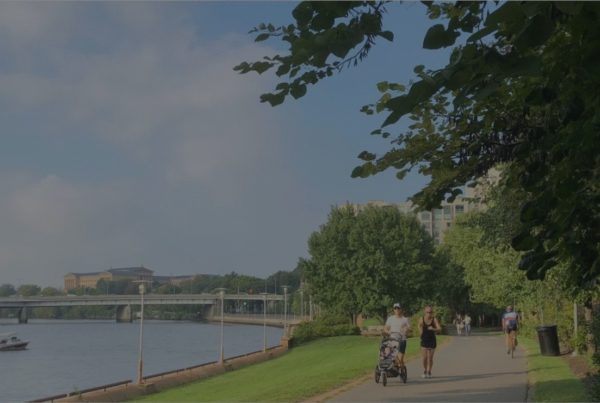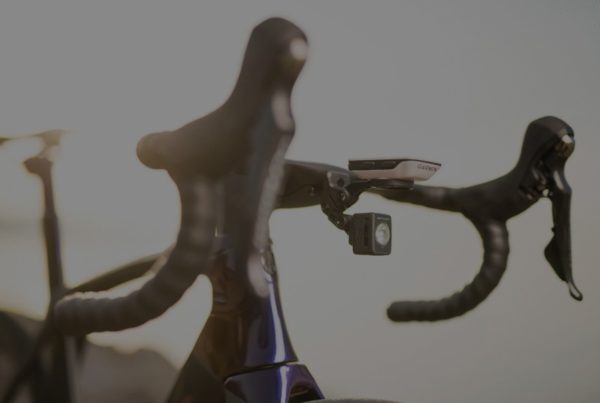Two weeks ago, I wrote about the collision that hospitalized Dr. Ed Farrar (see Yet another collision). Since then, I’ve received a letter I’d like to share. First, C.S. wrote in to say:
We held Ed’s rally this last Sunday. I figure 700 – 800 riders showed up. It was one of the greatest moments of my adult life. Watching this many people from all over the Pacific Northwest show and give their support to Ed. I actually got to see him. His eyes were bright and sparkly and he had the biggest grin on his face! What a moment.
That kind of support makes all the difference in the healing process—and the good news is that Dr. Farrar continues to make progress in his recovery.
Following my column on Dr. Farrar, I had hoped to move on to a lighter subject for this column. But no sooner had the last column run, than several more stories hit the news. One of those stories involved a cyclist who was killed in Kansas City in June. As some of you may no doubt recall, Sheriff’s Lt. David Dillon was out on a ride one morning when he was struck from behind by a driver who was distracted by his radio and a cell phone call. The driver admitted that he did not see Dillon until he struck him.
Last week, District Attorney Charles Branson announced that criminal charges will not be filed against the 21 year old driver, Kyle Van Meter. Noting that “it is a difficult time for the family,” Branson suggested that the Kansas Highway patrol issue citations for unsafe overtaking/passing, following too closely, and failure to wear a seat belt.
Failure to wear a seat belt? A driver who was simultaneously talking on the phone and adjusting his radio hit a cyclist he admits he never saw, and the D.A. suggests citing him for failure to wear a seat belt? Is this the best we can do? Branson did see a silver lining in the tragedy– “If any good can come from the tragedy we can only hope people will slow down and pay attention to their driving.” While that’s good advice, how can he reasonably expect that people will slow down and pay attention when killing a cyclist results in nothing more than a few citations for minor traffic offenses?
In July, I wrote about another miscarriage of justice involving a drunk driver who blew through a flashing train crossing and killed 19 year-old Autumn Grohowski. In that case, the D.A. did file criminal charges, although he declined to charge the driver with homicide by vehicle, explaining that “there’s blame on both sides.” In response to that column, I received a letter from a prosecutor, explaining his perspective on charging decisions. It’s longer than most of the letters I run, but worth sharing:
As an assistant DA and a cyclist, it is with a heavy heart that I read your article and an equally heavy heart that I must author this comment. The facts of this case are as tragic as they come from beginning to end. I could tell from the beginning where it was going and what the reactions of your readers would be. Unfortunately, the blame for the lack of justice in this case is not falling on the shoulders of those who are to blame.
I promise you all that the assistant DA in Autumn’s case delayed 6 weeks in filing the charges because he was trying to find a way to make the intoxicated manslaughter charge stick. If he is anything like the prosecutors here in Texas, telling Autumn’s family that it wasn’t going to work was one of the hardest things he had ever done. Where the case fails is that you have to prove that the intoxication caused the death. In this case, the intoxication was no doubt a huge factor, but not the sole cause. When prosecutors are faced with a situation where they know they can’t prove the case, they have a duty to not pursue it. Prosecutors are not like other attorneys. They do not get paid to win. They have a duty to do the right thing, even when it is hard and even when it results in a lack of justice for the victim. It is the hardest part of the job. So where should the blame fall?
The blame should fall on two places. First, the legislatures. They have made these cases so hard to prove. We have had a similar case pending here, where the victim was a cyclist from our office, that has been on going for over four years. It has gone through appeal after appeal and gone to jury trial twice. The defendant was finally convicted of the slightly lesser charge of failure to stop and render aid. The fact is, it is almost impossible to prove that intoxication was the cause when there are so many other factors when it comes to vehicular offenses and so many similar incidents where alcohol is not even involved. How many times have we heard of motorists getting hit by trains? They are stupid, no doubt, but not always intoxicated. Thus, legislatures need to amend the statutes to allow for convictions where alcohol has to be much less than the sole cause.
Secondly, the public is to blame. They do not care about cyclists on the road or their safety. They care more about the 30 seconds they save passing a cyclist unsafely than they do about the cyclist’s life. We live in an incredibly selfish and unfriendly time. How do we fix this?
The answer lies in each of us every day. We have to engage in a life that is centered around helping others and being kind and caring. We have to respect motorists instead of throwing the one-finger wave when they pass. We have to be bigger than that. We have to help our neighbors. We have to say hi to people we don’t know at the grocery store. When we are living that type of life, then the legislature will also listen. Remember, they are some of the motorists that pass you on the road, as are the juries. When this happens, we will all be a part of bringing a bigger justice, in Autumn’s name.
In Autumn’s case, the D.A. declined to charge the driver with the most serious charge because the facts of the case would have made a conviction difficult to obtain. Still, the D.A. did file lesser criminal charges—he tried to bring the driver who ran her down to justice, even if it wasn’t the justice that Autumn deserved.
But what is the rationale for not filing any criminal charges against a driver who is admittedly distracted to the point of not seeing a cyclist until the moment of impact? It’s not as if Kansas doesn’t have adequate laws on the books, after all. Both vehicular homicide and reckless driving are available charges, and applicable in the David Dillon case. For example, in Kansas,
Vehicular homicide is the unintentional killing of a human being committed by the operation of an automobile, airplane, motor boat or other motor vehicle in a manner which creates an unreasonable risk of injury to the person or property of another and which constitutes a material deviation from the standard of care which a reasonable person would observe under the same circumstances.
The facts of David Dillon’s death certainly seem to fit the definition of Vehicular Homicide, and yet the D.A. instead suggests citations for a few minor traffic offenses. Despite D.A. Branson’s optimism, it’s hard to see how a seat belt violation sends the message that people should slow down and pay attention.
Which brings us back to Dr. Farrar. At the beginning of this column, C.S. reported on the Rally for Ed; he finished by asking a question:
Bob,
This was just the beginning. We as a club are going to do more.We want Ed’s accident and situation to help change not only cycling in our community but our state and country. Ed has always showed and taught us that bikes matter. He did it by example and always with grace and dignity.
Can you help us? What should be our next step in bike advocacy? How do we re-educate our community about bike safety and rider vulnerability?
How do we take a stand against vehicle aggression?
This question was reminiscent of a question sent to me by P.K. of the Lebanon Valley Bicycle Clubfollowing the miscarriage of justice in the Autumn Grohowski case:
I need your advice as to what we should do in regards to the Autumn Grohowski case. Obviously, we should have been at the trial and sentencing. We should have tried to be allowed to speak at the sentencing. But that’s water over the dam. We do have three lawyers as members; one very, very strongly arguing for cyclists as equals, another working with the Department of Transportation and a third who is mostly retired but actually ran for county judge a decade or so ago. None of them hollered at me to take action.
I’m thinking that we need to speak with the District Attorney’s staff, and the D.A. himself. We need to prepare a newspaper guest column if we can. I’m going to be encouraging a reporter who didn’t seem to feel that justice was not served to read your VeloNews.com column and see if I can stir a different reaction.
Can you offer any other suggestions for growing our advocacy portion of the website?
I sent a few of my own suggestions to C.S., but I’d really like to open the question to Legally Speaking’s readers: What do you think can be done about cyclist safety?
Bob
(Research and drafting provided by Rick Bernardi, J.D.)
__________
I’d like to thank everybody who has contacted me to request my appearance at their event. I will be speaking as extensively on “Bicycling & the Law” this year as my practice will allow, and will make plans to appear before any club, bike shop, or other engagement that is interested in hosting me. If you would like me to appear to speak at your event or shop, or to your club or group, please drop me a line at bookbob2speak@gmail.com (and if you would like to contact me with a question or comment not related to my speaking tour, please drop me a line at mionskelaw@hotmail.com). I’m looking forward to meeting as many of my readers as possible this year.
This article, Can’t We Do Better?, originally published on VeloNews on November 20, 2008.



